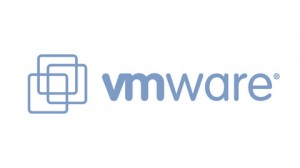 According to VMware CEO Paul Maritz, VMware executives are also spending time thinking and talking about cloud computing, just like the case of many IT vendors. He added that the company is not immune to the cloud fever as they use this term a lot.
According to VMware CEO Paul Maritz, VMware executives are also spending time thinking and talking about cloud computing, just like the case of many IT vendors. He added that the company is not immune to the cloud fever as they use this term a lot.
Earlier this week, VMware launched vSphere, a “major achievement” for the company that requires more than one million hours of engineering and two million hours of quality assurance testing. VMware is also currently synchronizing future releases of products in its cloud infrastructure stack, including vSphere, vCloud Director, vShield, vCenter Operations and vCenter Site Recovery Manager.
Maritz explained that all these lies VMware’s guiding principle of building automation into its products to increase operational efficiencies. He added, “This type of software has to become just like hardware.”
One crucial issue that drives data center costs is the difficulty of correlating management of compute and storage resources. To address this issue, Maritz said that VMware is closely working with storage industry and automate storage management in vSphere 5.
During Maritz’ keynote address at the opening of VMworld 2011 in Las Vegas, the VMware controversy that exploded last July was not mentioned. It was early August when the issue subsides after VMware raised vRAM allotments and capped the amount of vRAM. Still, companies focused on the costs associated with the new vSphere pricing structure.
Virtualization are getting steady since based on recent industry figures, more server applications are running on virtual infrastructure than physical infrastructure. Maritz added that a new virtual machine is ‘born’ every 6 seconds.
The implications of the interplay between the consumerization of IT and traditional enterprise IT makes the cloud era very profound.
“What we’re seeing in the cloud era is billions of new users and devices, and with that scale we need new techniques and approaches,” Maritz said.
“People are going to have to be able to react to information in real time.”
Another issue that VMware has targeted in its march to the cloud is application renewal. Maritz said that applications will need to be adjusted to avoid a return to the proprietary shackles of the mainframe era.
Maritz advised that VMware’s Cloud Foundry platform-as-a-service is designed for building cloud apps, but VMware’s virtualization will also play a role in paving organizations’ path to the cloud. He added that “virtualization technology is a critical technology for doing that because it can be applied in a non-disruptive way.”
VMware launched a beta of Cloud Foundry in April to support the three new frameworks – Spring, Ruby and Node.js. A downloadable version called Cloud Foundry Micro that puts PaaS in the hands of even more users was also unveiled last week by VMware.
In the keynote, Maritz said, “Cloud Foundry is about how cloud applications will be written in the future. It’s open in terms of modern programming frameworks it will support. We think the majority of next generation apps will be written by people under the age of 35.”